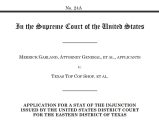
The Corporate Transparency Act (CTA) marks a major shift towards enhanced business transparency, aiming to counter illicit financial activities. An essential aspect of compliance involves preparing notarized affidavits for beneficial owners, underscoring their commitment to the CTA's requirements. Additionally, updating company minutes is crucial to reflect the new law, ensuring businesses remain aligned with the evolving regulatory landscape.
by LawInc Staff
September 12, 2023
The Corporate Transparency Act (CTA) represents a significant shift in the business regulatory landscape, designed to bolster transparency and counteract money laundering, terrorism financing, and other illicit financial activities.
As the CTA gears up for full implementation on January 1, 2024, the onus is on corporations and LLCs to not only grasp its nuances but to proactively gear up for compliance.
Here’s a deep dive into its significance and why immediate action is paramount.
1. Understanding the CTA’s Purpose:
The Corporate Transparency Act (CTA) is more than just a regulatory requirement; it’s a strategic initiative aimed at enhancing the integrity of the business ecosystem.
Combatting Illicit Activities: At its core, the CTA seeks to equip law enforcement agencies with the necessary information to effectively combat terrorism, money laundering, and other illicit financial activities. By shedding light on beneficial ownership structures, the act aims to close loopholes that have historically been exploited by bad actors.
Promoting Business Transparency: Beyond its security implications, the CTA also promotes a culture of transparency within the business community. By requiring companies to disclose beneficial ownership information, the act ensures that stakeholders, partners, and regulators have a clearer understanding of business structures and ownership.
Challenges for Businesses: While the CTA’s objectives are commendable, its implementation does pose challenges, especially for smaller businesses. The act mandates the collection, verification, and reporting of beneficial ownership information, which can be resource-intensive. Small businesses, in particular, may find themselves navigating complex reporting requirements with limited resources.
A Shift in Business Norms: The introduction of the CTA signifies a broader shift in business norms. The emphasis is moving away from absolute privacy towards a balance where transparency is valued, especially when it comes to ownership structures. This shift reflects the evolving expectations of stakeholders, regulators, and the public at large.
In essence, the CTA is a reflection of the changing dynamics in the business world. While its primary goal is to counteract illicit activities, its broader impact lies in promoting transparency, accountability, and integrity within the business community.
2. Identifying Beneficial Owners:
The Corporate Transparency Act (CTA) places a strong emphasis on understanding and disclosing the individuals behind business entities, ensuring that the true owners – or beneficial owners – are identified and reported.
The BOI Report: Central to the CTA’s requirements is the Beneficial Ownership Information (BOI) report. This isn’t just a formality; it’s a tool designed to provide clarity on who truly holds influence or ownership within a business entity. By mandating the filing of the BOI report, the CTA seeks to peel back the layers of corporate structures, revealing the individuals at the heart of the business.
Defining a Beneficial Owner: The term “beneficial owner” might sound broad, but the CTA provides a specific definition. It refers to individuals who either have significant influence over the company’s activities or hold a substantial ownership stake, typically 25% or more. This ensures that those with the power to guide or make decisions for the company are transparently disclosed.
Exemptions and Nuances: While the CTA is comprehensive, it also recognizes that not all entities pose the same risks or challenges. Hence, there are exemptions. Publicly traded companies, for instance, already undergo rigorous reporting requirements. Similarly, banks, which are heavily regulated, and certain trusts, which have their own set of transparency guidelines, are also exempted. It’s crucial for businesses to understand these nuances to determine their specific obligations under the CTA.
Importance of Accurate Reporting: The process of identifying and reporting beneficial owners isn’t just a regulatory hurdle; it’s a measure to ensure the integrity of the business sector. Accurate reporting can protect businesses from unwittingly being involved in illicit activities and can provide assurance to partners, stakeholders, and regulators about the company’s operations.
In summary, the CTA’s focus on identifying beneficial owners is a testament to the importance of transparency in today’s business environment. By understanding and adhering to these requirements, corporations and LLCs can operate with greater confidence and integrity in the marketplace.
3. What Needs to be Reported?:
The Corporate Transparency Act (CTA) mandates a detailed disclosure of information about beneficial owners. This isn’t just about names; it’s about providing a comprehensive picture that allows for clear identification and understanding of the individuals behind a business entity.
Detailed Identification: At the heart of the CTA’s reporting requirements is the need for clear identification. Companies are required to provide the full legal name of beneficial owners, ensuring there’s no ambiguity about the individual’s identity. This is crucial for regulatory and law enforcement agencies to accurately track and monitor business entities.
Trade Names and Branding: In addition to legal names, trade names or any other names under which the business operates must also be disclosed. This provides a clearer understanding of the business’s market presence and operations.
Address and Jurisdiction: A complete current address is essential for contact and verification purposes. Additionally, the jurisdiction of formation provides insights into the legal framework under which the business operates, which can be crucial for regulatory compliance and understanding the company’s legal obligations.
Tax Identification: The Internal Revenue Service taxpayer identification number is a unique identifier that further ensures the accurate identification of the business and its owners. This number is crucial for tax purposes and provides an additional layer of verification.
Timely Updates: The business landscape is dynamic, and changes can occur rapidly. Recognizing this, the CTA mandates that any changes in the reported information be updated promptly, specifically within 30 days. This ensures that the information available to regulators is always current and accurate.
Importance of Accurate Reporting: Beyond compliance, accurate reporting under the CTA is about fostering trust and integrity. Stakeholders, partners, and regulators can have greater confidence in businesses that adhere to these transparency requirements, ensuring that they have a clear understanding of the individuals and entities they are dealing with.
In essence, the CTA’s reporting requirements are designed to provide a comprehensive and up-to-date picture of business entities, promoting transparency, accountability, and trust in the business sector.
4. Immediate Action Required: Navigating the CTA Deadlines:
The Corporate Transparency Act (CTA) is not a distant requirement; its deadlines are fast approaching, and the implications for non-compliance are significant. Here’s a breakdown of what corporations and LLCs need to know and do:
Understanding the Deadlines: The CTA has set clear timelines for businesses, and these are contingent on when the entity was formed. For businesses established before January 1, 2024, they have a grace period, but reports must be filed by January 1, 2025. However, for entities coming into existence on or after January 1, 2024, the window is much shorter, with a requirement to file reports within 30 days of formation.
Early Preparation is Key: Given the detailed information required by the CTA, businesses should not wait until the last minute. Early preparation ensures that all necessary data is collected, verified, and ready for submission. This proactive approach can prevent potential oversights and errors.
Seek Expertise: Considering the complexities of the CTA, it might be beneficial for businesses, especially smaller ones, to seek legal or compliance expertise. Professionals can provide guidance on the nuances of the act, ensuring that businesses fully understand their obligations and are compliant.
Internal Communication: It’s essential for all relevant departments and stakeholders within a corporation or LLC to be aware of the CTA’s requirements. Regular internal communication can ensure that everyone is aligned and working towards timely compliance.
Stay Updated: As with any new legislation, there might be updates, clarifications, or amendments to the CTA. Businesses should establish a mechanism to stay updated on any changes to ensure continuous compliance.
In summary, the CTA’s deadlines are not just dates on a calendar; they signify the need for businesses to act promptly and decisively. With the right preparation and resources, corporations and LLCs can navigate the CTA’s requirements effectively and ensure they are on the right side of the law.
5. Preparing Beneficial Owner Affidavits:
It’s crucial for corporations and LLCs to prepare and notarize affidavits for beneficial owners. These affidavits should clearly state the owner’s agreement to comply with and provide the necessary information required by the CTA.
Clear Commitment: A notarized affidavit is a formal document that confirms the information provided is accurate. When beneficial owners sign these, it shows they understand and commit to the CTA’s requirements.
Early Preparation Avoids Stress: Initiating the documentation process early helps avoid last-minute rushes. This proactive approach is especially crucial given the potential penalties for non-compliance with the CTA.
Addressing Complex Ownership Structures: In certain jurisdictions, spouses might be considered beneficial owners due to community property laws. By gathering necessary documents, such as copies of licenses, companies can be better prepared for these intricacies.
Smooth Communication: Obtaining information from multiple owners can be time-consuming. Starting early can prevent potential misunderstandings and ensure everyone is informed about their obligations.
Efficient Record-Keeping: Organized and early documentation means companies can quickly respond to regulatory inquiries or audits. This proactive approach can demonstrate a company’s dedication to transparency and compliance.
6. Updating Company Minutes:
Company minutes serve as an official record of decisions made by a corporation or LLC. With the introduction of the Corporate Transparency Act (CTA), it’s essential to ensure that these minutes reflect the company’s efforts to comply with the new regulations.
Documenting Decisions: As corporations and LLCs make decisions about how to gather, verify, and report beneficial ownership information, these decisions should be documented in the company minutes. This provides a clear record of the company’s commitment to adhering to the CTA’s requirements.
Legal Protection: In the event of regulatory scrutiny or potential legal challenges, having detailed and updated minutes can serve as evidence of the company’s proactive approach to compliance. It demonstrates that the company has taken timely and appropriate actions in response to the new law.
Stakeholder Communication: Updated minutes can be a valuable tool for communicating with stakeholders, including shareholders, directors, and beneficial owners. It ensures transparency about the company’s actions and provides clarity about roles and responsibilities related to the CTA.
Regular Reviews: Given the significance of the CTA, companies should consider regularly reviewing and updating their minutes, especially as they refine their processes for collecting and reporting beneficial ownership information.
In essence, updating company minutes is not just a procedural step; it’s a strategic action that reinforces a company’s commitment to transparency, compliance, and stakeholder communication in the era of the CTA.
7. Penalties for Non-Compliance:
The Corporate Transparency Act (CTA) is not just another regulatory requirement; it’s a significant piece of legislation with stringent penalties for those who fail to comply.
Financial Implications: The immediate financial impact of non-compliance can be substantial. With fines amounting to $500 per day, businesses can quickly accrue significant liabilities. The cumulative effect can reach up to $10,000, a hefty sum, especially for smaller businesses.
Legal Consequences: Beyond financial penalties, the CTA also carries potential criminal repercussions. Severe violations can result in imprisonment for up to two years. This not only affects the individuals involved but can also tarnish the reputation of the business.
Reputational Damage: In today’s age of information, news of non-compliance can spread rapidly. Facing penalties under the CTA can harm a company’s reputation, leading to a loss of trust among clients, partners, and stakeholders. This can have long-term implications on business relationships and growth.
Operational Disruptions: Regulatory investigations and the associated legal processes can disrupt regular business operations. Time and resources that could be spent on growth and innovation might be diverted to address compliance issues.
Increased Scrutiny: Once penalized, businesses might find themselves under increased scrutiny from regulators in the future. This can lead to more frequent audits and reviews, adding to operational costs and complexities.
The penalties associated with the CTA are not just about fines and potential jail terms. The ripple effects of non-compliance can impact various facets of a business, from its finances to its reputation. It underscores the importance of understanding, preparing for, and adhering to the CTA’s requirements.
8. Staying Updated in a Dynamic Regulatory Landscape:
In the world of business, change is the only constant. Regulations, in particular, are subject to revisions, updates, and amendments. The Corporate Transparency Act (CTA) is no exception. Here’s why staying updated is crucial:
Proactive vs. Reactive: Being aware of changes as they happen allows businesses to be proactive rather than reactive. This proactive approach can lead to smoother transitions, fewer disruptions, and reduced risks of non-compliance.
Avoiding Penalties: As discussed earlier, non-compliance with the CTA can result in significant penalties. Staying updated ensures that businesses are always in line with the latest requirements, minimizing the risk of inadvertent violations.
Leveraging Opportunities: Regulatory changes can sometimes open up new opportunities. By staying updated, businesses can identify and capitalize on these opportunities, turning potential challenges into advantages.
Stakeholder Communication: Keeping abreast of changes allows businesses to communicate effectively with stakeholders, including shareholders, employees, and beneficial owners. Clear communication can prevent misunderstandings and ensure that everyone is aligned with the company’s compliance strategy.
Resource Allocation: Knowing about upcoming changes in advance allows businesses to allocate resources effectively, whether it’s for training, system updates, or documentation.
In Conclusion:
The Corporate Transparency Act underscores a broader trend towards transparency and accountability in the business world. It’s not just a regulatory requirement but a reflection of the evolving expectations of stakeholders, from regulators to the general public.
By staying updated on the CTA and other related regulations, corporations and LLCs position themselves not just for compliance but for success in a transparent and accountable business environment.
ALSO SEE: $500/Day Penalty & Prison Time Per Corporate Transparency Act










